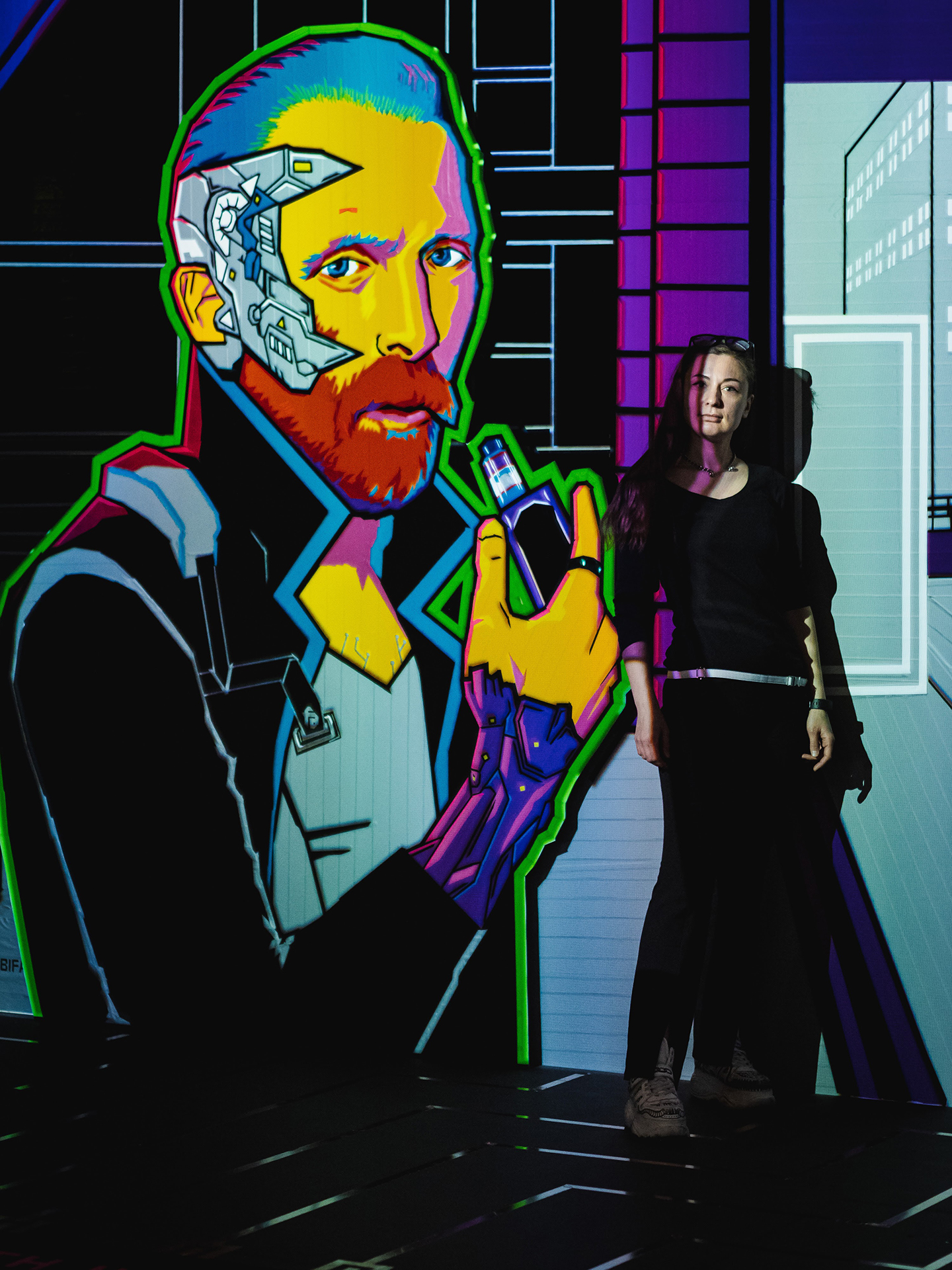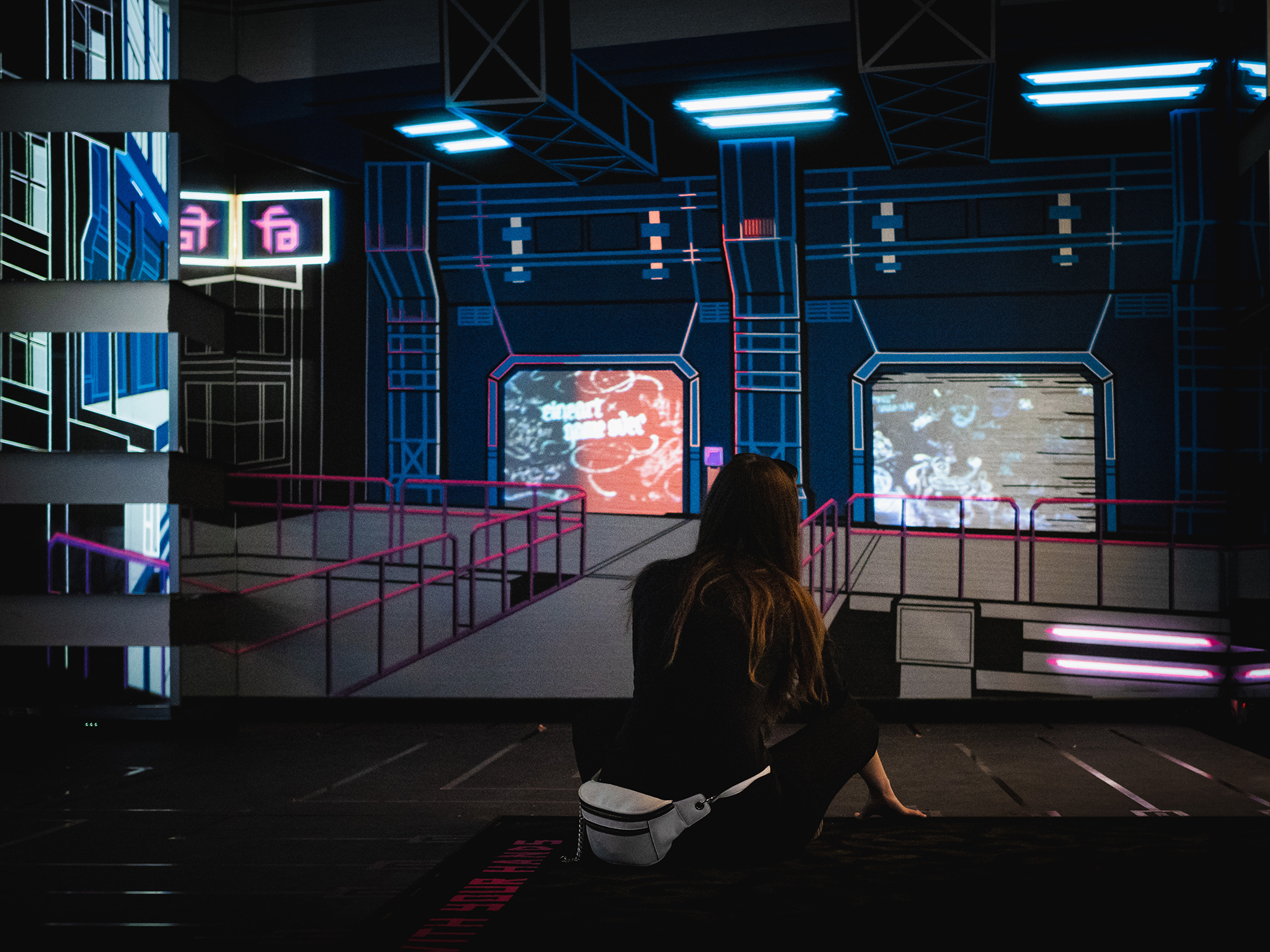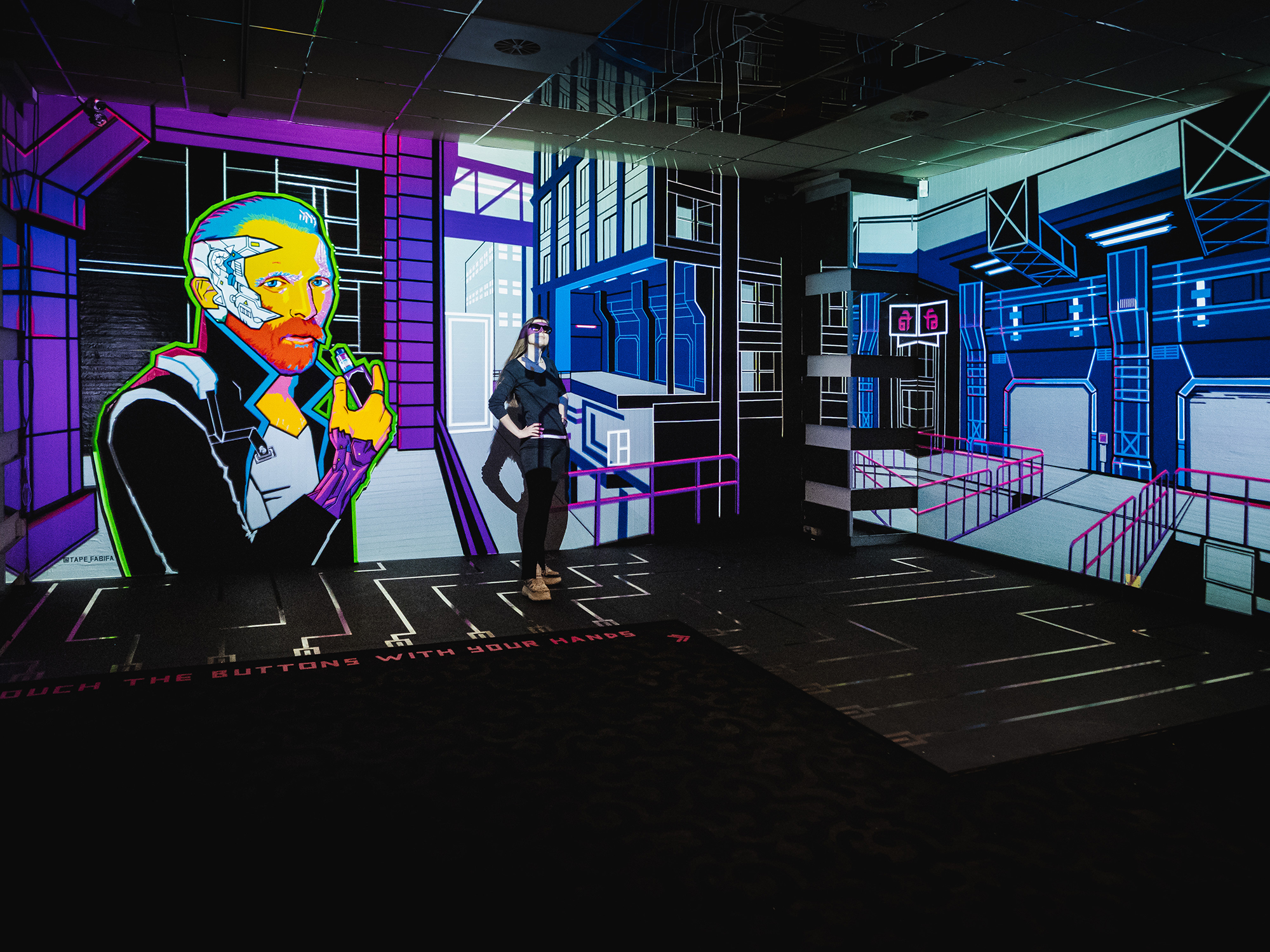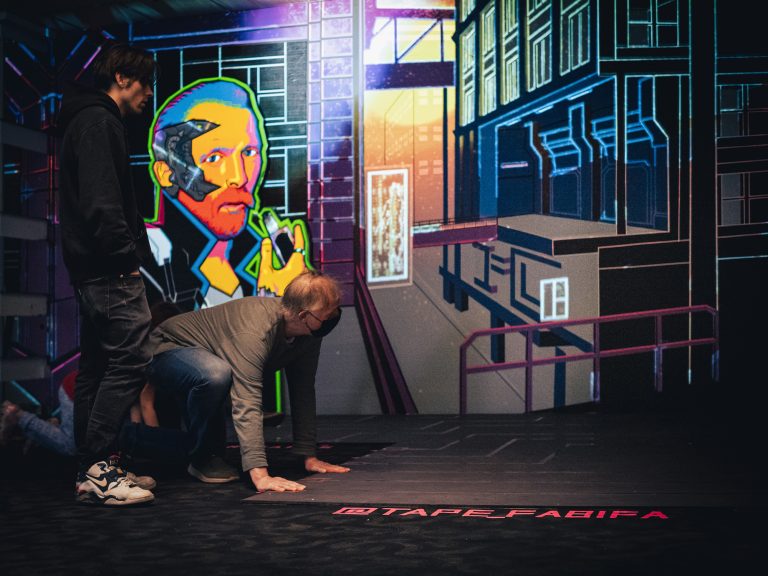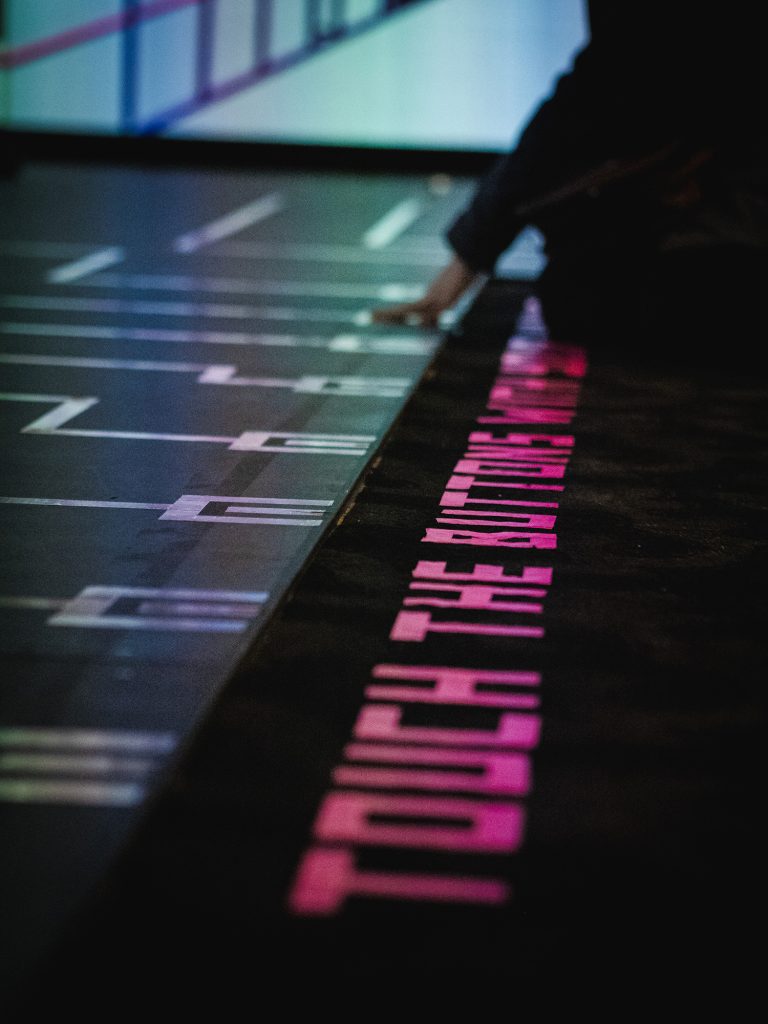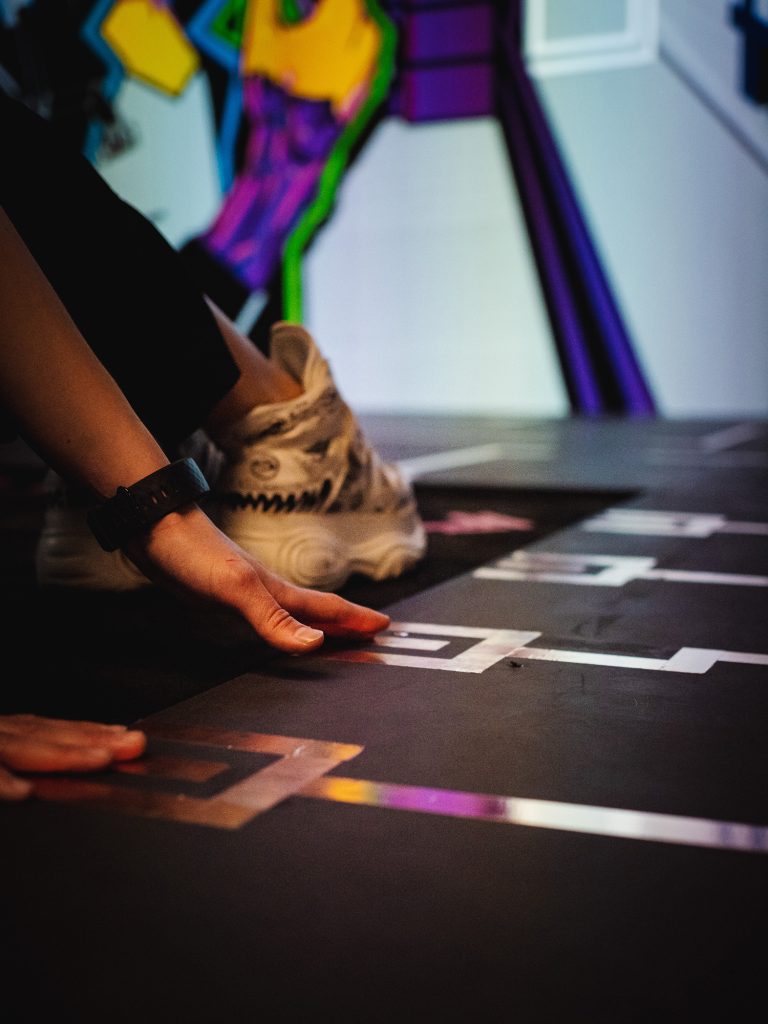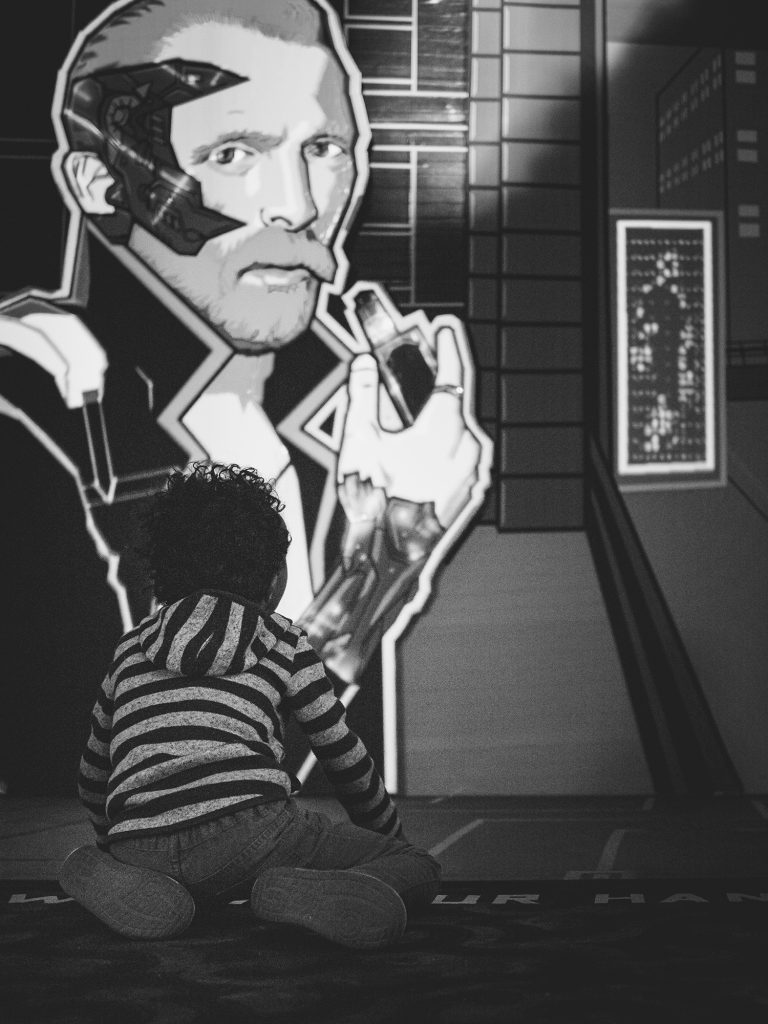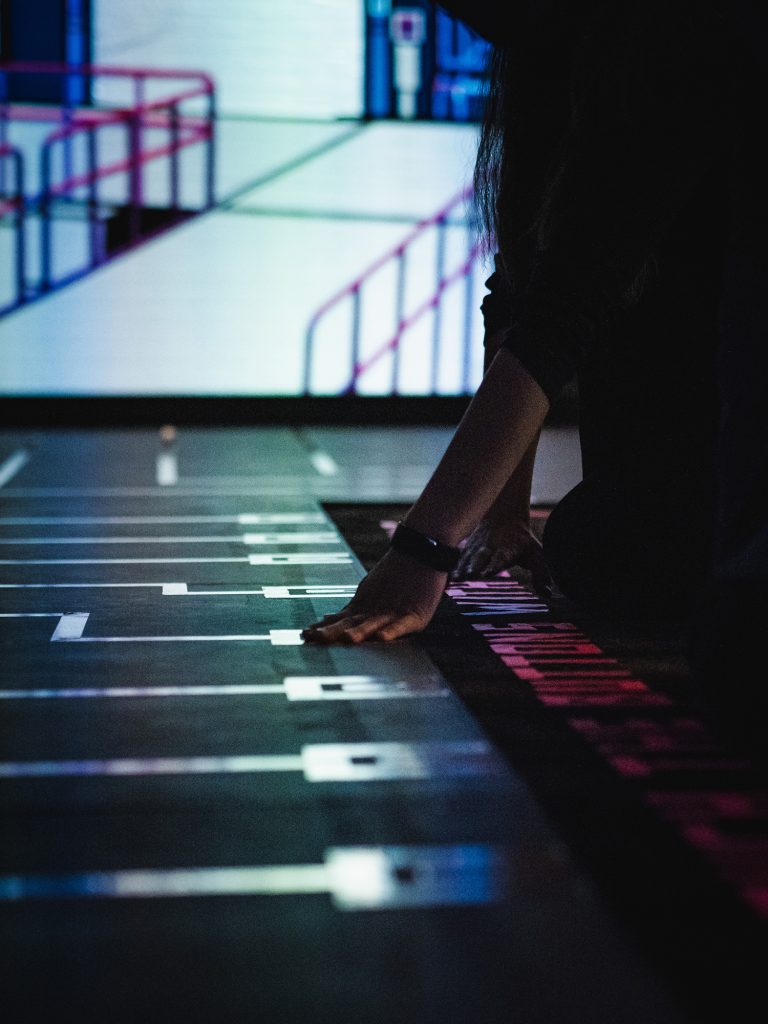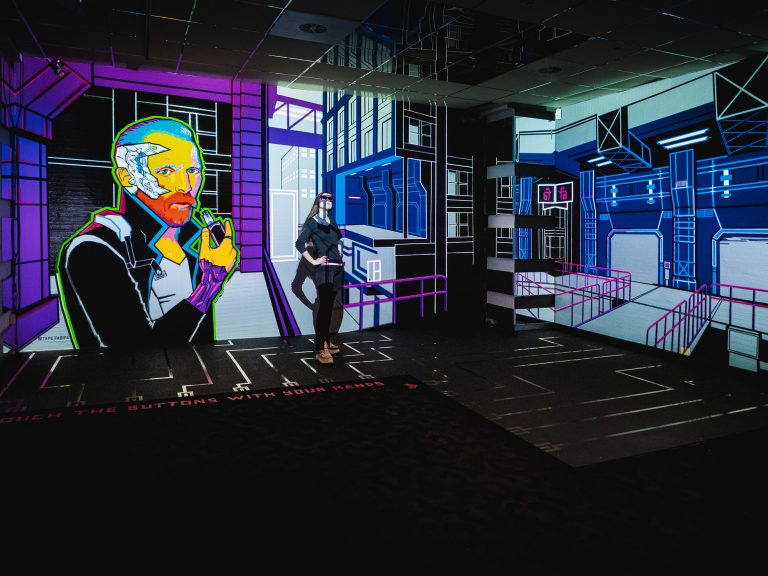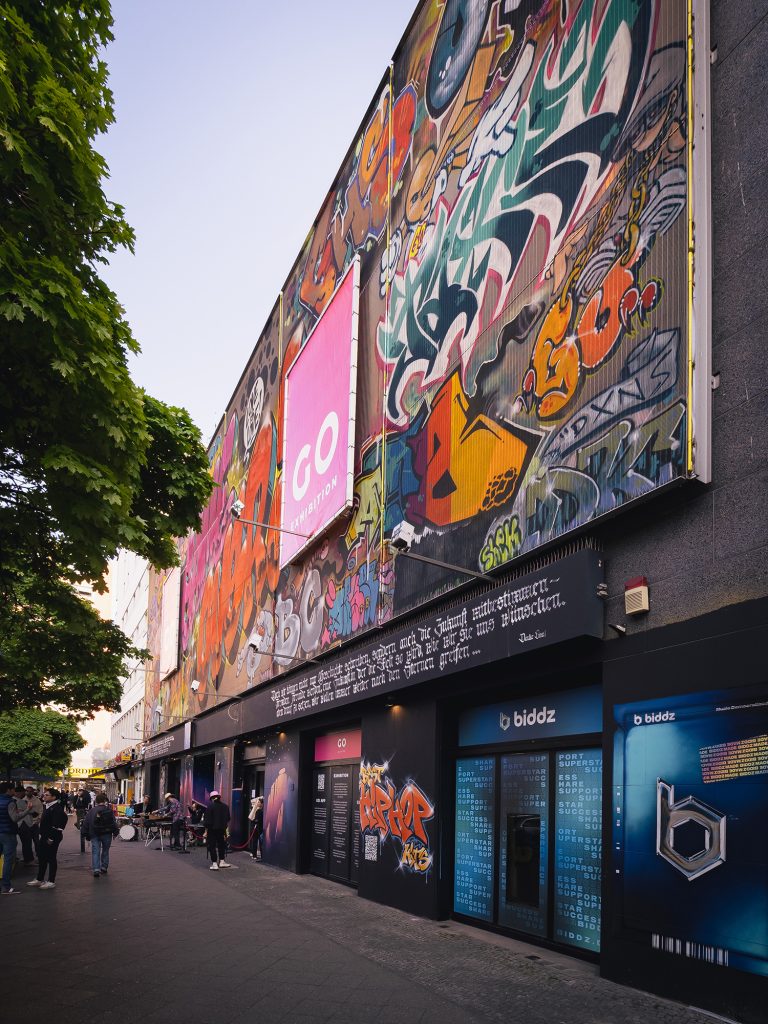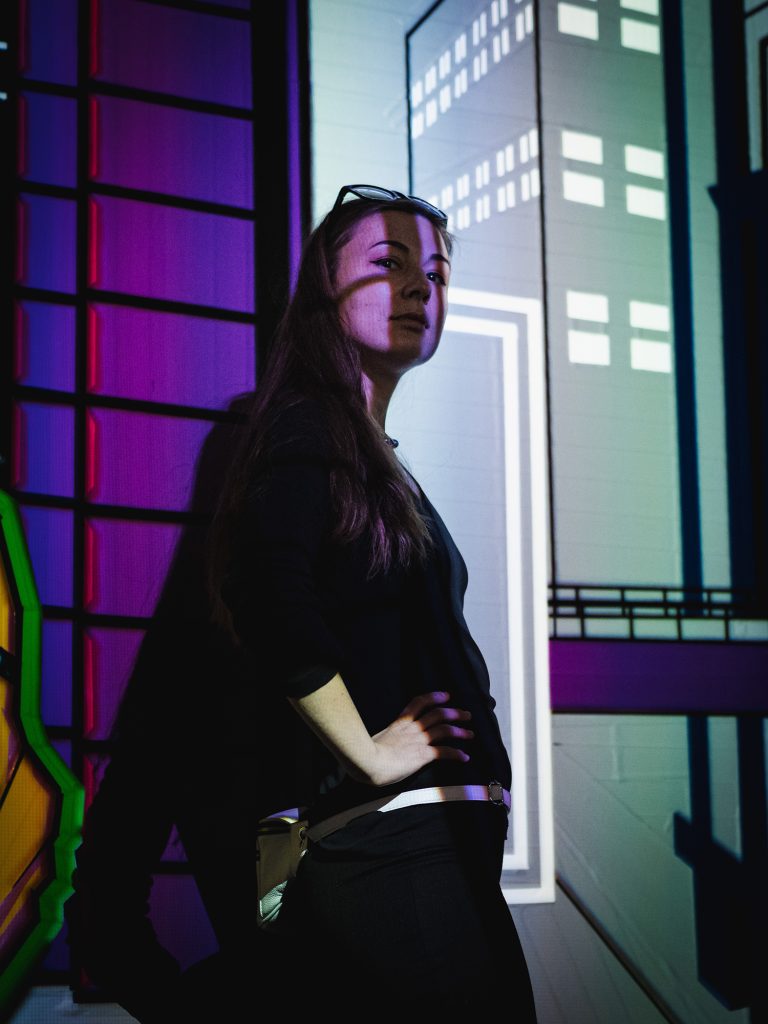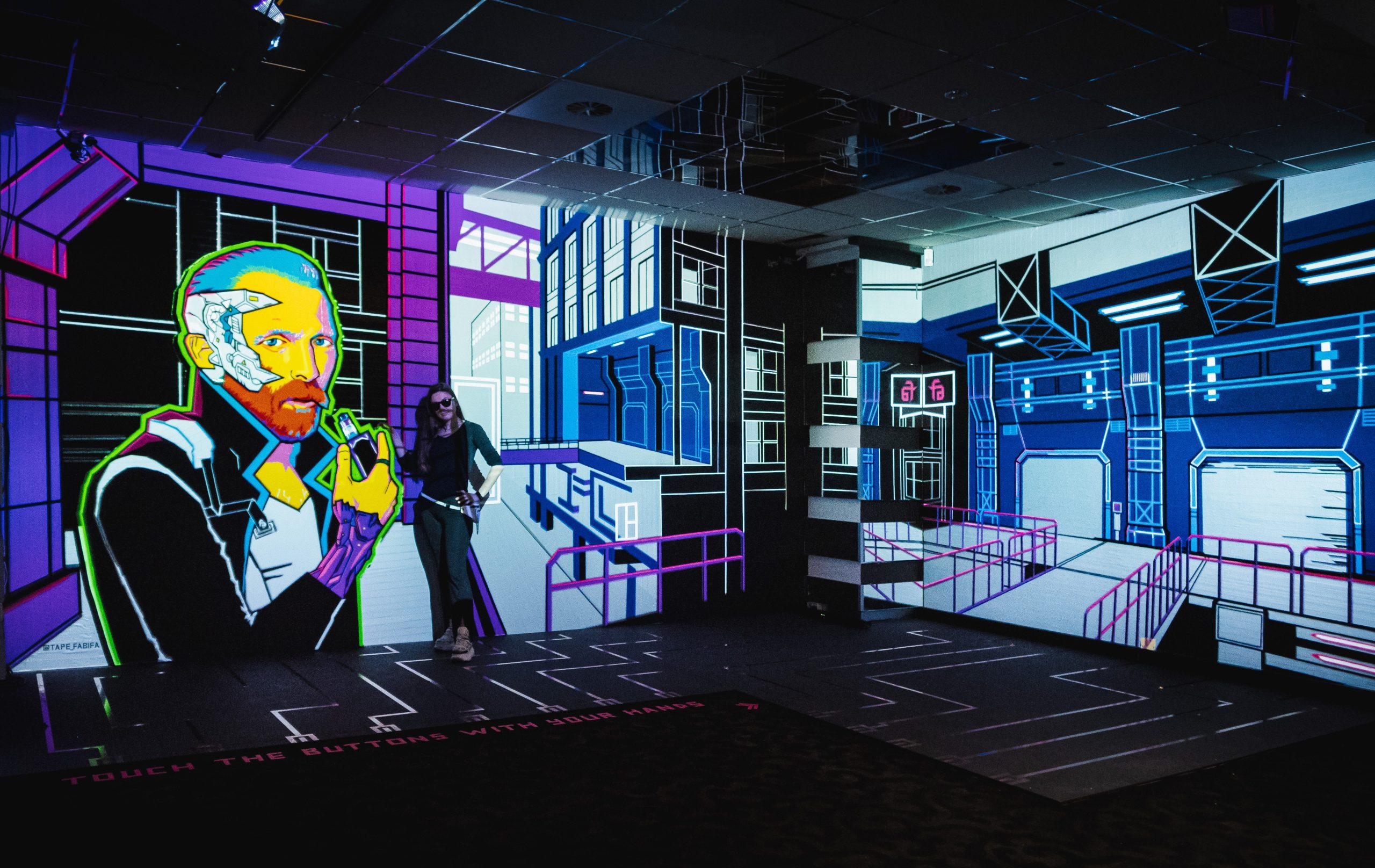
Interactive tape art installation CYBERBASE
“Cyberbase” is an immersive interactive tape art installation created by the contemporary artist Fabifa. The work combines tape art with light and sound projections to create a unique visual and sensory experience. At the center of the piece is a portrait of Vincent van Gogh, reimagined living in a modern world with advanced technology integrated into his body. Van Gogh is shown with a cybernetic implant replacing his severed ear and a modified arm. He smokes a vaporizer, a detail that reflects his current state of wellbeing in this futuristic setting.
The Modern Mona Lisa (see project here) is part of this larger exploration of reimagining iconic figures through tape art and technology, adding depth to the themes of identity and transformation in Fabifa’s work.
The installation includes a detailed cityscape in the background. This city is a physical tape art representation of a virtual environment called Cyberbase, originally created by digital artist Aetherways. The virtual city is displayed across the room at Game Over Berlin. It draws inspiration from the neon-lit streets of Tokyo at night, mixing elements of cyberpunk aesthetics and digital reality (see more in Ecotech series). The cityscape features vibrant colors and shapes that convey a futuristic urban atmosphere. Adding motion to the installation, an animated projection created by artist Tiziano Mirabella is cast onto the tape art, making the city feel alive and constantly changing.
Viewers can actively engage with the installation. Embedded in the floor is a microchip design made of copper tape, featuring buttons shaped like hands. By pressing these buttons, visitors activate different parts of the installation. Each interaction triggers specific light and sound projections that illuminate sections of the cityscape and animate Van Gogh’s portrait. This interactive element invites viewers to explore the artwork in a hands-on way and to experience the blending of physical and digital art.
The installation is designed to engage multiple senses. Instead of being a purely visual experience, it involves touch and sound to deepen the viewer’s connection to the piece. The interaction encourages visitors to become part of the artwork itself, creating a sense of immersion and participation. This setup prepares the audience for virtual reality experiences by demonstrating how multiple sensory inputs can work together to create a richer perception of a digital world.
“Cyberbase” explores ideas about how technology changes the way we live and express ourselves. By imagining Van Gogh with cybernetic enhancements, the artist raises questions about identity and creativity in a world where human bodies can be modified with machines. The project also highlights the meeting point between traditional physical art and new digital forms. Tape art, a physical medium, is combined with modern technologies like light projections and sound design to create something new.
The installation reflects Fabifa’s interest in how freedom, identity, and technology interact. It offers a fresh perspective on the legacy of Van Gogh, placing him in a context where technology and humanity merge. “Cyberbase” is both a tribute to the past and an exploration of future possibilities, showing how art can adapt to and incorporate new tools and ideas.
This project was presented at Game Over Berlin, a space known for combining digital art and virtual reality. “Cyberbase” fits into this environment as a bridge between the real and the virtual, inviting people to explore both through active engagement. The collaborative work with other artists, including Aetherways and Tiziano Mirabella, brings together different skills and media to create a multidimensional experience.
Overall, “Cyberbase” is a thoughtful and hands-on artwork that combines physical tape art, interactive technology, and multimedia projections. It invites viewers to rethink the relationship between humans, machines, and art, and offers an accessible way to experience these ideas through direct interaction. The piece encourages participation and reflection on how technology shapes our world and ourselves.
